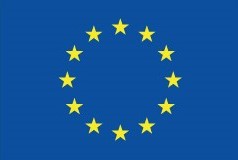- Home
- EuroDairy – Assessing biodiversity in dairy farms
EuroDairy – Assessing biodiversity in dairy farms
Assessing biodiversity is not straightforward, making it difficult to communicate the facts. Within EuroDairy we evaluate the potential of Biotex, a biodiversity assessment tool, to evaluate the impact of different dairy farming systems on biodiversity.
Biodiversity
Biodiversity is defined by the number, diversity and variability of living organisms, and their movements over time. When talking about biodiversity, we often focus on so-called extraordinary biodiversity, i.e. endangered species. However, ordinary biodiversity is equally important.
Ordinary biodiversity covers insects, fauna and flora, as well as soil microorganisms that are characteristic of a specific region or area. This biodiversity is essential for ecological regulation and has an important impact on food production through, for example, pollination or the ability of soil to produce organic matter.
Agriculture and dairy farming play a key role in maintaining ordinary biodiversity. Farming activities are intrinsically linked to the territory, and their everyday practices model landscapes and have an impact on biodiversity: permanent grassland offers permanent shelter for species, management practices of crop fields (harvesting time, available shelters nearby, etc.) will impact species survival in the area.
A single tool, different farming systems
EuroDairy partners decided to use the Biotex tool as a common tool for biodiversity assessment. This tool combines three major advantages:
- It is easy to implement, based on indirect indicators that are readily available on the farm
- It is time efficient, both for the farmer and auditor, and easy to understand
- It does not rank farming systems. EuroDairy covers various dairy farming systems in different regions. Each system is adapted to its own specific region, and they cannot be compared to each other. The Biotex tool allows us to assess a farm’s contribution to biodiversity, within the context of its specific region
The Biotex tool is based on the evaluation of three indirect indicators:
- The landscape mosaic is an indicator of agricultural land use and species conservation. In areas with a majority of annual crops, land use diversity allows the conservation of fauna species. The effects of potentially aggressive agricultural practices for fauna are limited when the landscape mosaic is diverse
- Available developed biodiversity area is an indicator of landscape diversity and shelter capacity. The developed biodiversity area per hectare of UAA illustrates the landscape complexity created by the farm. This indicator corresponds to a farm’s capacity to shelter fauna and flora
- Permanent grassland is an indicator of biodiversity resources, depending on management practices. Grassland is a regulation area if it is not intensively managed. It is a source of available biodiversity and allows the colonisation of poorer areas such as annually cultivated areas. There is an exchange dynamic between grassland and other areas (woods, fields, etc.)
All farmers receive feedback after the audit. This feedback is not intended to be prescriptive but, by bringing the impact of certain farming practices on biodiversity to the farmer’s attention, is intended to raise awareness on biodiversity.
Farmer case study
At Vernierfontaine, good farming practices are favourable to biodiversity
Patrick Duboz is a dairy farmer and President of the Vernierfontaine Coop. Located in the east of France (Doubs), this cooperative gathers 20 dairy farms and 2100 ha, and collects 6.6 million litres of milk per year to produce Comté, a French PDO cheese.
Why did Vernierfontaine decide to perform a biodiversity assessment?
“The cooperative was willing to perform the audit. We were curious to know the impact of our practices on biodiversity, and if they were adapted to our territory.
“With hard and permeable limestone soils, our ancestors decided to use this land as pasture. Today, 57% of the farm land area is permanent grassland and 33% non-permanent grassland. The remaining 10% is used for cereal crops.”
What were the results?
“It appeared that the density of agroecological elements is quite high in the farms involved in Vernierfontaine. The production system is defined by Comté product specifications, particularly concerning fertilisation. Some farmers decided to bring more fertilisation on some parcels to increase forage production and, consequently, feed autonomy.
“On the other hand, some parcels receive little to no fertilisation and create a biodiversity reservoir. The territory is characterized by a large presence of hedges, due to the presence of what is called murger d’épierrement in the region. These are piles of stones that were manually put aside by farmers, which ended up creating small walls over time, where hedges grew. Hedges and field hedges are maintained and leave an open landscape, which is more favourable for biodiversity than woods.
“Autumnal maintenance avoids destruction of birds’ nests or flowers. The audit highlighted that the existing practices are mostly favourable to biodiversity.”
This project has received funding from the European Union`s Horizon 2020 research and innovation programme under grant agreement No 696364.
 Government logo
Government logo

